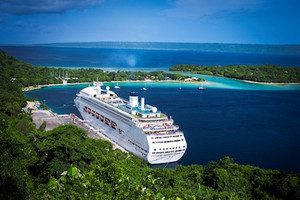
For every traveller there are plenty of good reasons to blend into a destination like a local. For one, you’re more likely to discover places off the beaten path which other passengers from your ship may not. Also, not standing out in a crowd can make things safer when exploring by yourself. Here’s our top tips on how to look like a local in port.
1. Do Your Research
You’d be surprised at how many travellers arrive at a destination with no real idea where they are in the world, and what being there means. If you’re cruising to remote or exotic ports of call, read up about the destinations before you leave home. And if you’re aiming to explore on your own, independently from the ship, have a rough plan including where you want to go, what you want to see, and where things are located geographically, especially where your ship is docked or anchored.
2. Know The Local Lingo
No one expects you be fluent in Mandarin or Italian before going on a cruise, but learning a few key words such as “please”, “thank you”, and polite greetings will go a long way, as well as make you look a little less clueless. It can also be handy if you are using public transport, taking a taxi, or in search of the perfect souvenir - in some countries, bargaining is essential!
3. Brush Up On Local Customs
This should also form part of your pre-cruise research, especially if travelling somewhere new and exotic. Customs vary widely across the world, and a quick way to be spotted as a tourist is not complying with even the most common ones, such as blowing your nose in public in Japan, which is considered impolite. And in some parts of Europe, including Spain and France, siesta is still acknowledged, which means shops may close for a few hours in the afternoon.
4. Tipping
This can also be a major issue for many visitors. While in the US tipping is largely expected everywhere you go for service industries, in many countries in Asia it isn’t. Singapore, for example, doesn’t encourage tipping at all, while in Japan it causes significant embarrassment, even in a bar or restaurant. Meanwhile in Mexico you’re expected to tip for practically everything, and even though tipping was abolished in Switzerland, you will pay an automatic service charge in restaurants and taxis.
5. Use Local Transport
When you’re researching your port of call, check up on how to get around, and if public transport is a good option, as it may get you to places you’d otherwise find it hard to visit. Check important things like when buses or trains run, if you have to use local currency to pay, how to pay, and if services are reliable. Also pay attention; you don’t want to be chased by a conductor on a tram in Nagasaki for not paying as you couldn’t work it out, or end up in the Korean countryside by not looking out for your destination station.
6. Dress Appropriately
It’s a good idea to know what the temperature is likely to be when you visit, but if you are visiting certain countries with a strong religious culture you may need to cover up, such as visiting temples in Thailand, or a mosque in Dubai. Another great tip about dressing is to not overdo it in some countries, especially when it comes to jewellery and designer clothes. You may be madly in love with your $250 Nikes, or your sparkling new Gucci watch, but such items can attract the wrong kind of attention.
7. Explore On Foot (Or On A Bike)
If you want to explore independently, doing it on foot is a great way to go, but if you are going off the beaten track, make sure it is safe to do so. In some cities, just venturing one block away from a tourist area can add up to trouble. If you want to cover more ground, or burn off some of that cruise food, consider renting a bike. Be careful if you want to hop off for lunch, or explore that museum; make sure you secure your bike, and take valuables with you.
8. Be Discreet And Pay Attention
Walking about with your face in a guidebook or map, or with a camera attached to your hand permanently, is a clear sign you are a tourist. If you need to take time out to take in your surroundings, take a photo or consult with your companions, step aside and out of the way. Guidebooks, maps and cameras at the ready are also a sure sign to a pickpocket that you’re a visitor, so be aware of your surroundings, consider using a map app on a smart phone, or digital notes. And certainly enjoy that photo op, just take time to put the camera away and enjoy the moment.
9. Take Cash
You might be able to use US or Australian dollars in some ports of call, and euros in the EU, but having small amounts of local currency might come in handy if you’re exploring on your own, using public transport, or you want to buy some bottled water or a snack ashore. Credit cards are not always accepted in some countries, and while safe, travellers cheques are a hassle to change if you are time pressed. Don’t exchange too much, as you may not have enough to trade back, and become familiar with the currency, notes and coins. If you’re not planning to buy many souvenirs, leave your credit cards behind; ditto your passport, unless you need it for a bank transaction or require it for ID.
10. Don’t Be THAT Tourist
It’s easy to get swept away by your surroundings, and get into holiday mode too much. When you are on a cruise and in port, remember you are a visitor, and representing your home country; don’t get drunk, be too loud or rude, or generally behave badly. And whatever you do, don’t break the law; no one wants to be the subject of a phone call from a police station to the ship’s Captain!
- By:
- Joanna Hall






